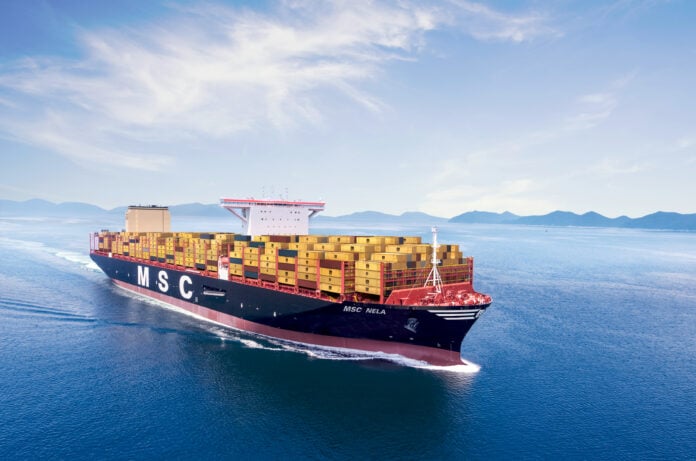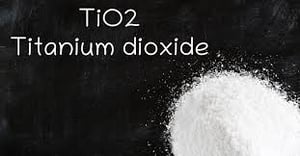Quadrise Fuels International plc (LON:QFI) Chief Executive Officer Jason Milescaught up with DirectorsTalk for an exclusive interview to discuss the test results for bioMSAR™ on a medium 4-stroke engine, decarbonisation in the shipping sector, other advantages of bioMSAR™, Aquafuel and how bioMSAR™ fits in with the company net zero plans.
Quadrise Fuels International is the global innovator and licensor of disruptive heavy oil technology that also produces MSAR® fuel. Today, the company has provided test results of bioMSAR™ on a medium speed 4-stroke diesel engine at the VTT facility in Finland. Joining me today to discuss the results is CEO, Jason Miles.
Q1: First off, can you just explain what bioMSAR™ is and the significance of publishing these results today?
A1: bioMSAR™ is a renewable version of our conventional emulsion fuel MSAR®, which is made using the same technology. With bioMSAR™, we’ve incorporated renewable glycerine into the fuel as a transition solution to immediately reduce carbon emissions for our clients. Other than this, the two fuels are very similar and essentially interchangeable.
The beauty with bioMSAR™ is we can adjust the glycerine amount in bioMSAR™ to match the de-carbonisation requirements of our clients which helps during their transition to net zero.
These latest results are an important forward step in commercialising bioMSAR™.
Q2: Why did you select this engine and VTT as the test partner?
A2: This engine, a Wartsila engine, and the VTT test facility have been used for many years as a Wartsila 4-stroke development and fuel testing facility. It’s the same engine that’s used in diesel power plants and cruise ships and ferries so it’s an important reference base. It was used extensively in the past for emulsion and MSAR® developments as well, leading to over 150,000 hours of successful commercial operation. So, for bioMSAR™, it was important to get that reference.
Importantly, it’s also used to inform industry when there are regulatory changes. So there was work done as an example for IMO 2020, sponsored by Neste, to look at the impact of low sulphur fuels prior to that regulation coming into effect. So, it’s used by industry as a test facility to inform the marine sector.
For us, third party verification for bioMSAR™ at a reputable facility was key for us and our clients, which is why VTT was selected.
Q3: Now, you mentioned shipping, why is it going to be so hard to decarbonise?
A3: Well, decarbonisation of the marine sector is relatively new and there are a number of solutions available today, with no clear winners at the moment.
A large amount of investment is needed for this shipping sector to decarbonise but regulation is really only just catching up with the consumer demands, as opposed to say the automotive sector where they’re already mandating the use of the percentages of biofuels, so it’s relatively new for the marine sector.
Having said that, the sector itself is actually quite an efficient means of transportation. Maritime transport emits about 940 million tonnes a year of CO2, that’s only about 2.5% of global greenhouse emissions, and that’s been reduced by about 30% over the last few years by efficiency measures to try and decarbonise the sector.
So they’re already making the right transition but decarbonisation is obviously taking effect now and a number of different options are being considered.
Q4: Just going back to the results, how good were the bioMSAR™ results and were they in line with expectations?
A4: They actually exceeded our expectations. We formulated the bioMSAR™ with about 40% renewable glycerine, which essentially meant that would provide at least 20% CO2 reductions and on average, we actually obtained 26% CO2 reductions, which is a much higher than we thought. That was a combination of the renewable glycerine and the higher engine efficiency that was obtained.
Other emissions such as smoke and particulates were very low in line with previous results with MSAR®, but even lower than that because of the presence of glycerine, which doesn’t have any ash in the fuel. Also, those low emissions indicate the expected emissions of black carbon, which we think will be legislated in the future for the marine sector, they were extremely low with bioMSAR™ as well. Emissions for the other components such as NOx and CO were also low, although we certainly believe that further optimisation is possible. This initial test was fairly limited in scope, but we believe that we can get some much better NOx emissions as well.
Q5: Does bioMSAR™ offer other advantages?
A5: Yes, it does, specifically we believe it would be available to a lower cost than conventional biofuels per unit energy, which is important. The fuel itself is also a drop-in, so it can be used with existing fuel tanks and fuel systems, and also the engines themselves. We’re doing all the testing with conventional engines so the engines don’t need to be modified at all.
So, any changes that may be made for MSAR® are also applicable for bioMSAR™, and vice versa, so the two fuels offer an excellent option for the marine client looking to both reduce their emissions, but also reduce their costs as part of their operating regime.
Q6: Now, today’s announcement also mentions further testing at Aquafuel. Can you just expand on that and any other plans?
A6: So, with Aquafuel, we’re working on further optimising bioMSAR™ performance on a smaller scale diesel generator, we have a 40 kilowatt Cummins engine that we’re using for testing.
We’ve already obtained for some really good results which we’re very happy with, including high efficiency and low NOx. We think, with this further testing we’re doing and the modifications we’ve made to the engine for the performance monitoring systems, that we can really further optimise the performance of bioMSAR™ on these small engines, and also provide data which will support the optimisation of larger engines as well.
So, it opens up new opportunities in terms of the market for us, but it also helps to support our current market sectors such as power and marine.
Q7: Finally then where does bioMSAR™ fit in with Quadrise Fuels International’s net zero plans for 2030?
A7: So, it’s an important step, obviously with this initial testing we’ve already obtained what we believe is 26% reduction in CO2 emissions, and that’s on a ‘well-to-wake’ basis it’s important to stress. So, that’s essentially looking at the emissions all the way from the ground through to end use, which is where the sector appears to be going, which is a very important way of looking at all the different fuel options.
So, we believe today we’ve got 26% less emissions measured already or calculated from the testing, we have an option to increase the glycerine content already, and we have that already ready to go for testing, to 50%. So, we can essentially reduce CO2 emissions by a third.
We’re then looking at other fuels where we can essentially incorporate those to fully decarbonise the product and we’re working on that obviously as a development pathway to meet our target for the net zero solution by 2030.







































